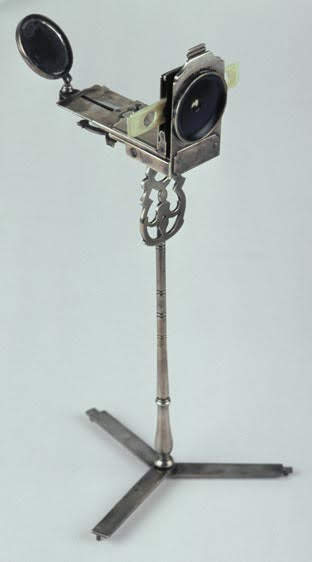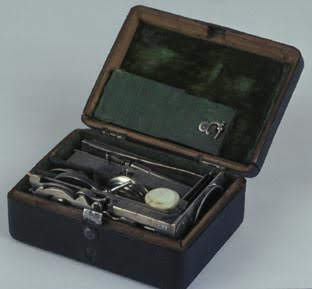A handwritten advertisement on a microscope by George Lindsay reads:
"G Lindsay Watch & Clockmaker to his Royal Highness ye Prince of Wales at ye Dial near Catherine Street in ye Strand. Inventor & Maker of ye Generally portable microscope"
The "Generally portable" microscope is Lindsay's pocket microscope (Image 1), the first example of which is now in the collections of the Whipple Museum. Lindsay published a pamphlet describing the microscope in 1743, though he claimed that he had invented it for personal use as early as 1728.
The "Prince of Wales" mentioned in Lindsay's advertisement was the son of King George II, Frederick, who was tutored in contemporary natural philosophy, and had an armillary sphere made for him by the instrument maker J. Sisson. The Lindsay microscope was presented to George II, and eventually entered the collection of George III.
The design of the microscope
The main feature of the microscope is that it could be "contained in a Case not exceeding six Cubic Inches" (Image 2). Portable microscopes had increased in popularity since the end of the 17th century. This was partly in response to demand for instruments for use outdoors, in the field. It was also related to the way in which the microsocpe was used and perceived in the mid-18th century. Many instrument makers were creating elaborate and ingenious designs, partly in reponse to the demands of naturalists, and partly to enhance their own businesses.
As well as being portable Lindsay's microscope design also incorporated practical improvements, such as a substage mirror, one of the first to be added to a pocket microscope. Lindsay's following claim, from the patent document, is perhaps a little exaggerated:
"That the Purpose of Enquiry into the minute Parts of Nature, ... having been partly retarded by the inconvenient apparatus made for that Purpose, in all former microscopes, are by this invention entirely taken away."





